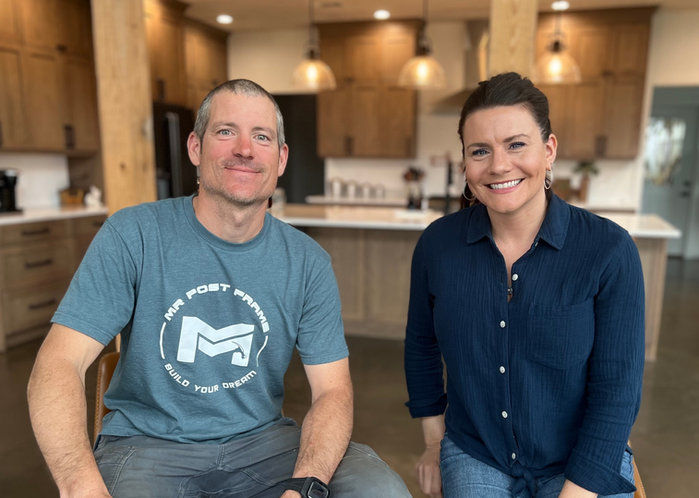Pier Footing Foundation with Wet Set Brackets
- MR Post Frame

- Nov 23, 2023
- 3 min read
Updated: Dec 19, 2023
Welcome back to the MAD county build series. It's July 30th, and I’m back on the construction site, pushing forward with our Barndominium project. In this episode, we're going to show you some behind-the-scenes action as we lay the groundwork for our new home and garage. So, let's dive right in!
In a previous episode, I discussed how to lay out a building and ensure that it's properly squared up. I followed the same principles here but used the back of our storm shelter as a reference point for squaring. With the main house and garage layout established, it was time to get down to business.

Building Sturdy Wall Brackets: Today, my focus was on securing the storm shelter with three sturdy wall brackets. These brackets are essential for mounting the shelter, and we wanted to get this done before the rainstorm hit. The remaining columns for the house and garage would be placed on 16-inch round footings, a task for tomorrow.
Marking Out Footings: To begin, I needed to mark out the footings for the posts and drill the necessary holes. I took precise measurements for the post spacing based on my plans and set up string lines on the garage to guide me. Starting from the back corner of the garage, I marked the desired hole locations along the string line, spray-painting the spots where I’d drill. This process was repeated for three sides of the garage, excluding the front, which required a bit more planning.

The Importance of Double-Checking: As I marked out the holes, I encountered a mistake in my measurements. It's a perfect reminder to always double-check your work when dealing with critical measurements. Fortunately, this error was caught early, saving me from potential issues down the line.
Preparing Footings for Pouring: With the markings complete, I moved on to preparing the footings. I used Sonotube concrete forms, cutting them into 16-inch sections for most holes. However, for some areas with fill, I used full four-foot sections. These tubes are positioned vertically, with 2x4 bracing to ensure stability.
To level the tops of the Sonotubes accurately, I used a transit, guaranteeing a strong foundation for our posts.
Adding Drainage for Porch Posts: Our porch posts gave me a unique challenge. To prevent water issues, I opted to use wet set brackets, which would be visible. These brackets, combined with cedar posts, would create a different kind of aesthetic. The bottom of the posts needed to be above the finished concrete level, so I built boxes around the posts' future locations to control the concrete's height. This technique ensures that water doesn't consistently pool around the posts.

Completing the Pour: With everything set up, it was time to pour the footings. I poured 27 holes, and while the concrete was set faster than expected due to the sun and warm weather, I managed to get the job done. It's always a bit challenging to handle such tasks alone, but the satisfaction of saving costs and taking on the project personally makes it worthwhile.
As I continue to lay the foundation for our dream Barndominium, we're excited about the progress I’ve made. My careful planning and attention to detail are paying off. I’ve learned that, with determination and the right resources, you can take on significant construction projects, even if you're working solo.
Stay tuned for more updates, as we'll be sharing my journey step by step. Your support and interest in our project mean the world to us!
Thank you,
Mr Post Frame

Patreon Group:
Interested in tackling your build on your own? If you want to explore the possibility of being your GC or self-building, our Patreon membership is for you! It's a community of like-minded people offering support, discounts, Q/A, and more.







Comments